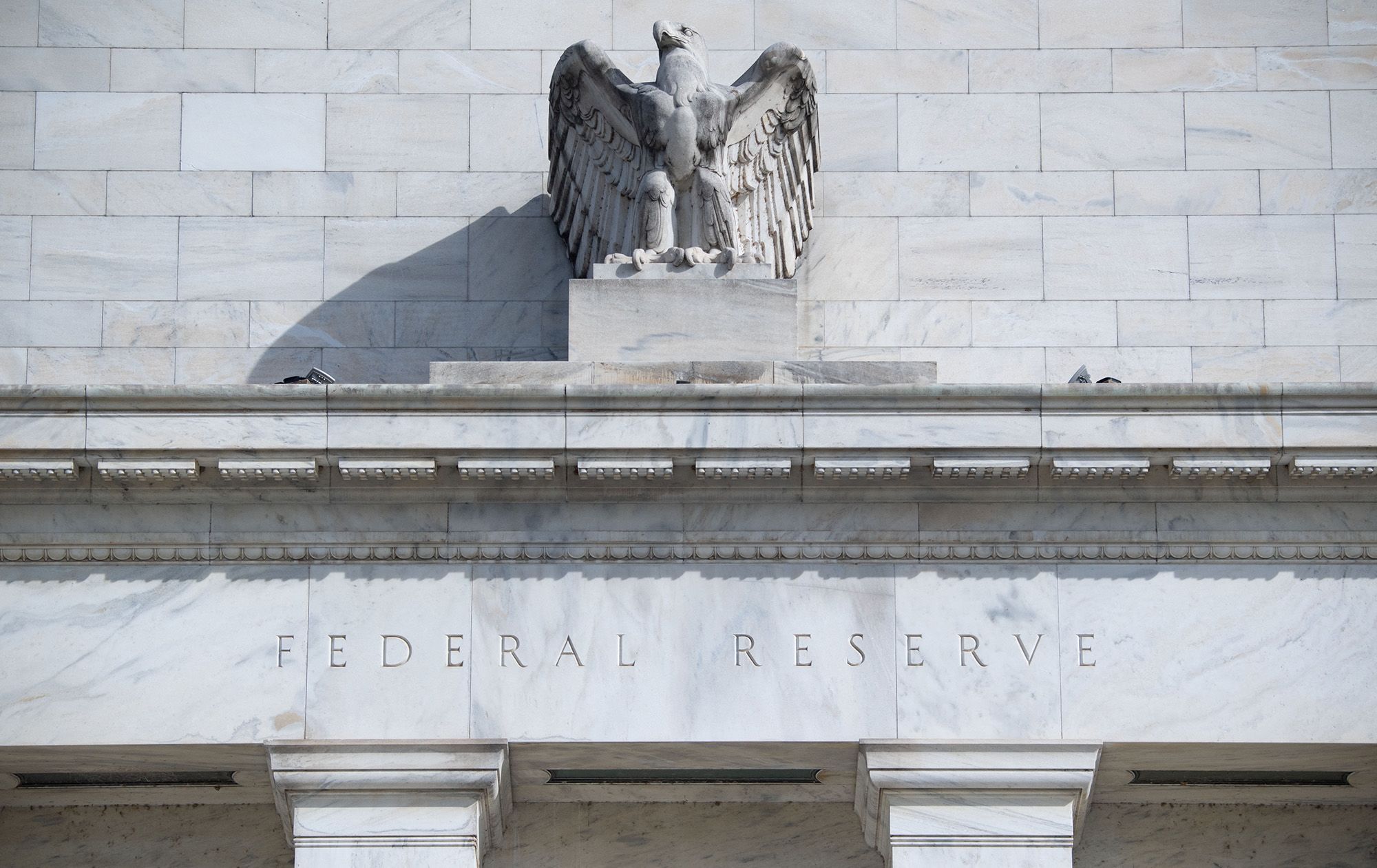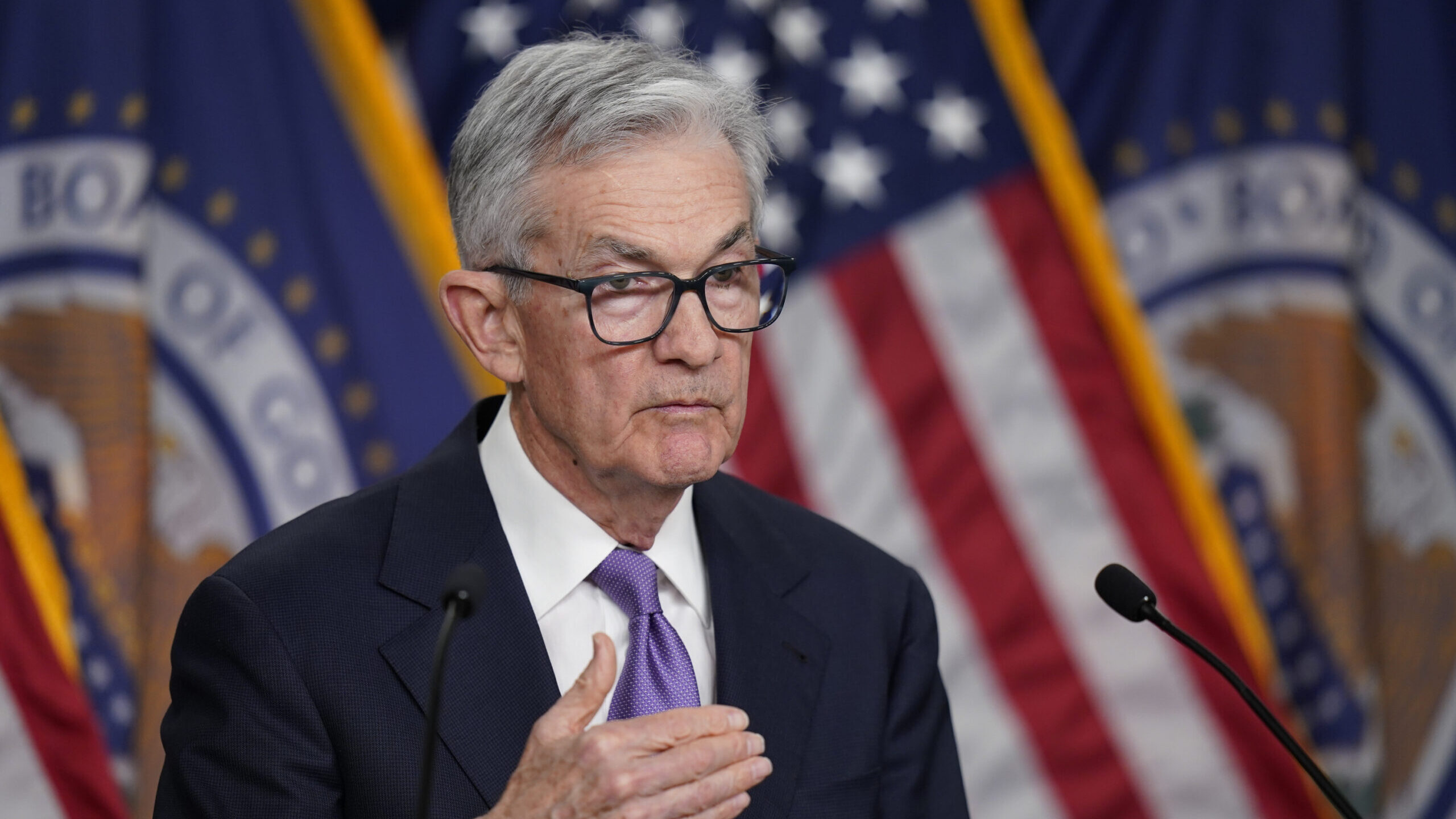Stagflation fears just hit Wall Street. Now for the next crucial report on prices
Apr 26, 2024, 6:37 AM | Updated: 7:51 am

The Marriner S. Eccles Federal Reserve Board building. For almost two years now, the story of the economy and markets has been all about runaway inflation and central banks’ historic attempts to reverse it. But we may be turning over a new page in the storybook — and it could have a happy ending for your 401(k). (Credit: Saul Loeb/AFP/Getty Images)
(Credit: Saul Loeb/AFP/Getty Images)
The Federal Reserve’s favorite inflation reading is due Friday morning. For Wall Street, the stakes are high.
The Personal Consumption Expenditures price index is expected to rise 2.6% for the 12 months ended in March, according to FactSet estimates. The core PCE index, which excludes the more volatile energy and food categories, is expected to rise 2.7% from the prior year.
Investors are nervously awaiting the report after first-quarter US GDP came in softer than expected Thursday. Gross domestic product, which measures all the services and goods produced in the economy, rose at an annualized rate of 1.6% during the first three months of the year, the Commerce Department reported.
A local view: Fewer people moving to Utah means slower economic growth
That’s the weakest pace of growth since the second quarter of 2022, when the economy contracted, and well below the Atlanta Fed’s estimate of a 2.7% gain.
A slowing economy should help slow inflation and offer support for the Fed to start easing interest rates. But Thursday’s Commerce Department report didn’t reflect that. It showed that the quarterly headline and core PCE index rose 3.4% and 3.7%, respectively, from the year before.
Stocks tumbled as the slowdown in GDP, coupled with stubbornly high inflation data, stoked fears of stagflation. That’s when the economy sees weak growth while inflation runs high. In a stagflationary environment, prices for things from gas at the pump to food at the grocery store continue rising while people’s means to spend decreases.
The Fed has warned that it doesn’t plan to cut rates until inflation comes down closer to its 2% goal, even if growth slows sharply. The central bank is responsible for stabilizing prices and maximizing employment, not specifically boosting growth. Some officials have even suggested another rate hike could be in order if inflation doesn’t cool down, which could pressure the economy further.
If the March PCE index comes in hotter than expected, “the Fed’s going to be stuck between a rock and a hard place,” said Ayako Yoshioka, senior portfolio manager at Wealth Enhancement Group.
Traders project that the Fed, whose May policy meeting takes place next week, will make just one rate cut during the second half of 2024, according to the CME FedWatch Tool. Wall Street earlier this year expected that the central bank would ease rates as many as six times in 2024, beginning in March.
Still, some analysts say that one GDP report isn’t yet cause for concern, since more cool data would be needed to establish a trend. Plus, the labor market continues to show remarkable resilience, as does Americans’ spending power, providing pillars of support for the economy.
“The bottom line is that the economy moderated somewhat in the first quarter, but it remains on solid footing overall,” wrote Bank of America economists in a note.
Janet Yellen: US economy strong, not overheated
Despite a weaker-than-expected first-quarter GDP reading, the US economy is “firing on all cylinders” and inflation is on a path toward a more normal level, US Treasury Secretary Janet Yellen said Thursday in an interview with Reuters.
Yellen on Thursday was interviewed by Reuters’ editor in chief, Alessandra Galloni, as part of the news organization’s NEXT Newsmakers series, reports my colleague Alicia Wallace.
“The economy is clearly performing very well,” Yellen said. “I certainly don’t see it as overheated. The labor market is the strongest labor market we’ve had in 50 years.”
Earlier on Thursday, the Commerce Department reported that the US economy grew by an annualized rate of 1.6% during the first quarter. The GDP reading (which will be revised twice more in the coming weeks) is the slowest pace of growth since the economy contracted in the second quarter of 2022.
Yellen said the weaker reading was not “concerning,” mentioning that measures of underlying growth were strong in Thursday’s report.
US pending home sales jumped in March, beating expectations by a mile
Home sales based on contract signings unexpectedly jumped in March despite elevated mortgage rates that month. And the latest data from Freddie Mac showed that mortgage rates edged higher this week, reaching a fresh five-month high, reports my colleague Bryan Mena.
Pending home sales — a forward-looking indicator based on contract signings rather than closings — climbed 3.4% in March, the National Association of Realtors reported Thursday, which was “the best performance in a year,” according to a release.
That was well above the 0.3% decline forecast by economists, according to a FactSet poll. Contract signings rose across the country in March from the prior month, except in the Midwest.
Despite the March gain, pending home sales are still “in a fairly narrow range over the last 12 months without a measurable breakout,” NAR’s chief economist, Lawrence Yun, said in a release. “Meaningful gains will only occur with declining mortgage rates and rising inventory.”
The broader US housing market began the year with some momentum, as home sales climbed, homebuilder sentiment improved and traders priced in several interest rate cuts this year. Now, the narrative has shifted.
The-CNN-Wire













